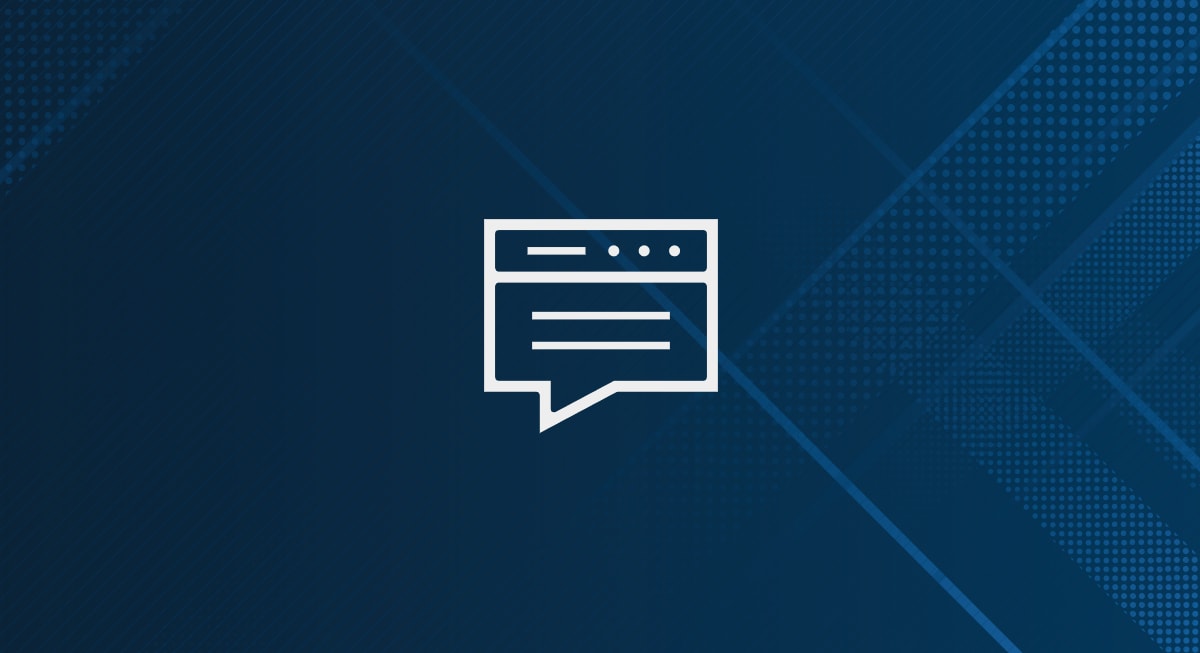Financial service organizations face a growing challenge. Their customers expect 24×7 access and self-service convenience, meaning these organizations must move to the cloud and embrace new technologies. However, those moves also expand their attack surface, increase cyber risk, and make achieving and maintaining compliance more challenging.
The risks are amplified when it comes to credit unions, who are heavily targeted by cybercriminals – finance was the most targeted industry by business email compromise (BEC) attacks in 2023 – due to the volume of private and financial data they store, their reliance on third parties and digital communications, and their often-out-of-date software and hardware. Additionally, credit unions are not only expected to meet the same rigorous compliance frameworks as larger financial institutions but must also do so with fewer resources and smaller budgets.
Few financial sector compliance and regulation frameworks are more comprehensive in their protections or more complicated in their adherence than those prescribed in the Federal Financial Institutions Examination Council (FFIEC) Information Security Booklet, which provides guidance to all NCUA credit unions.
What is The FFIEC?
The Federal Financial Institutions Examination Council (FFIEC) is the inter-agency body of the United States government empowered to prescribe uniform principles, standards, and report forms for the federal examination of financial institutions. It is empowered by various entities, including the Board of Governors of the Federal Reserve System (FRB), the Federal Deposit Insurance Corporation (FDIC), the National Credit Union Administration (NCUA), the Office of the Comptroller of the Currency (OCC), and the Consumer Financial Protection Bureau (CPFB).
The FFIEC promotes uniformity in the supervision of financial institutions. Regulated financial institutions must comply with the guidelines of FFIEC consistent with the Gramm-Leach-Bliley Act of 1999 (GLBA). FFIEC documented the necessary controls for compliance in the “FFIEC Information Security Handbook” and subsequently provided a cybersecurity assessment tool to help financial institutions improve their cybersecurity postures.
What is The NCUA?
The National Credit Union Association (NCUA) is “an independent federal agency that insures deposits at federally insured credit unions, protects the members who own credit unions, and charters and regulates federal credit unions.”
The NCUA plays a crucial role in safeguarding the credit union system by identifying, monitoring, and mitigating risks to the National Credit Union Share Insurance Fund, which insures individual accounts at a federally insured credit union up to $250,000. Part 748 of the Code of Federal Regulations outlines the tasks that every federally insured credit union must carry out as part of its security program. As part of NCUA’s safeguarding efforts, they periodically review every federally insured credit union to ensure the compliance, safety, and soundness of their information security program, as well as any holding companies and non-financial subsidiaries. This includes the guidelines set forth in the FFIEC Information Technology Examination Handbook (IT Handbook).
Understanding the Domains of FFIEC Compliance
FFIEC compliance is comprised of five major domains, each involving multiple controls.
Those domains are:
- Domain one: Cyber risk management and oversight
- Domain two: Threat Intelligence and collaboration
- Domain three: Cybersecurity controls
- Domain four: External dependency management
- Domain five: Cyber incident management and resilience
These domains take a holistic, end-to-end approach to cybersecurity, mirroring other guidelines such as NIST CSF 2.0, which follow an identify, protect, detect, respond, recover, and govern cycle. The domains, and subsequent controls, should be followed in tandem and adjusted to meet changing security and business needs. However, unlike the NIST CSF 2.0, NCUA organizations must meet FFIEC guidelines to be in federal compliance.
According to the white paper Arctic Wolf Platform for FFIEC Information Security, the framework responsibilities organizations should implement in their environment include:
- Select and use a comprehensive cybersecurity framework, such as NIST SP 800-53 rev. 4, ISO/IEC 27001, or others, to inform the institution’s approach to what is not specified in FFIEC InfoSec.
- Create a risk management plan to evaluate potential risks to institutional data and business continuity and to respond with actions to support risk mitigation and avoidance.
- Design and deploy technical infrastructure, hardware, and software to ultimately support FFIEC InfoSec policy by compliance with the cybersecurity framework’s controls.
- Ensure the confidentiality, integrity, and availability of all banking data the institution creates, receives, maintains, or transmits.
- Protect against any reasonably anticipated uses or disclosures of such information not permitted or required.
- Ensure compliance by its workforce with appropriate training, separation of duties, and authorization to access all entity systems, including those containing banking and financial data.
- Use security measures dictated by the cybersecurity framework to implement the technical controls, policies, and procedures reasonably and appropriately.
Explore our white paper in-depth.
Considering each of these domains contains multiple controls that range from governance to risk management to network monitoring to incident detection and response, it can be difficult for credit unions to understand what is needed and implement the controls effectively. However, there is great value in doing so.
The Value of Following FFIEC Guidelines for Credit Union Compliance
For organizations that may find themselves strained for resources and budget, stringent compliance regulations like FFIEC can feel like just another box to check. However, compliance guidelines are much more valuable, created to protect data from unauthorized access and reduce an organization’s cyber risk and prevent incidents.
The FFIEC domains are explicitly designed to reduce cyber risk, and failure to follow them can result in fines, reputation damage, lawsuits and more. These regulations can also improve an organization’s operational and overall security architecture, improving visibility, reducing alert fatigue, enhancing security software, and solidifying governance procedures to reduce the burden on staff while making sure that staff is set up for success if an incident occurs.
FFIEC Compliance and Arctic Wolf
Arctic Wolf is in a unique position to not only help credit unions improve their security posture, detect and swiftly respond to incidents, and take a holistic approach to cybersecurity, but can also help these organizations with FFIEC compliance.
Domain 1: Cyber risk management and oversight
How Arctic Wolf can help: In addition to the broad visibility provided by Arctic Wolf® Managed Detection and Response (MDR), Arctic Wolf offers dashboards and regular reporting on the state of an organization’s environment. Arctic Wolf® Managed Risk helps organizations implement a risk-based vulnerability management program, enabling them to actively reduce risk. Additionally, Arctic Wolf takes a concierge delivery approach, providing human support for both risk management, detection and response, and governance.
Domain 2: Threat Intelligence and collaboration
How Arctic Wolf can help: Threat intelligence is vital to Arctic Wolf’s operations. The Arctic Wolf Security Operations Platform is designed to collect, enrich, and analyze data at scale. Not only is this allowing credit union customers to receive precise, actionable information about their environment, but the sheer volume of data collected creates a network affect, where patterns noticed across customers allows Arctic Wolf to enact preventative measures across our customer base. Additionally, Arctic Wolf Labs provides threat intelligence across the industry, releasing regular security bulletins and annual threat reports to help organizations understand and mitigate their cyber risk.
Domain 3: Cybersecurity controls
How Arctic Wolf can help: Not only is Arctic Wolf MDR an industry-leading cybersecurity solution for monitoring, detection, and response, but through our Concierge Delivery Model, Arctic Wolf works with customers to enhance or implement needed cybersecurity controls that will increase their defenses. Arctic Wolf is dedicated to a customer’s unique security journey, that reduces their cyber risk over time.
Learn more about the Arctic Wolf Cyber Resilience Assessment.
Domain 4: External dependency management
How Arctic Wolf can help: The Arctic Wolf Platform ingests data from the cloud, including SaaS and IaaS platforms, minimizing the expanded security risk the cloud can enable. This visibility expands across the network as well, meaning if any third-party organizations are connecting to your organization’s network, that traffic will be monitored by Arctic Wolf, with the same real-time detection and swift response like any other area of your environment.
Domain 5: Cyber incident management and resilience
How Arctic Wolf can help: Arctic Wolf understands that every environment is different, so we tailor all our solutions to your needs, meaning you’ll only receive actionable alerts, customized risk reports, and named support through our Security Teams. Our MDR solution helps mitigate incidents before they escalate, as you can see in our timeline. If an incident does escalate, Arctic Wolf® Incident Response is here to help – offering digital forensics, rapid response to help you restore your environment to pre-incident conditions, and more.
Learn more about Arctic Wolf Incident Response.
Explore how Arctic Wolf keeps a leading credit union’s valuable data safe.
Take a deep dive into how Arctic Wolf can help your organization achieve FFIEC compliance.





